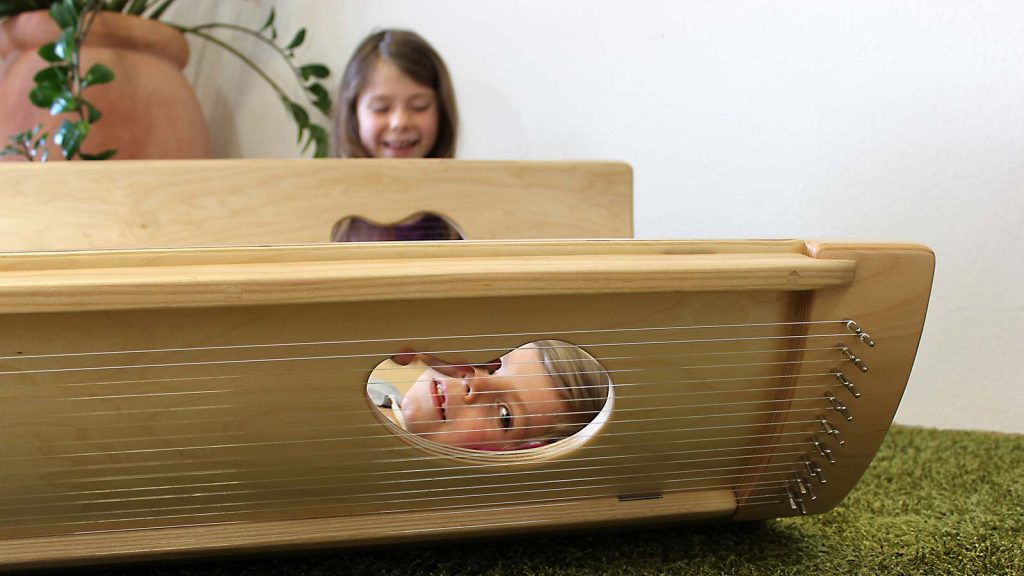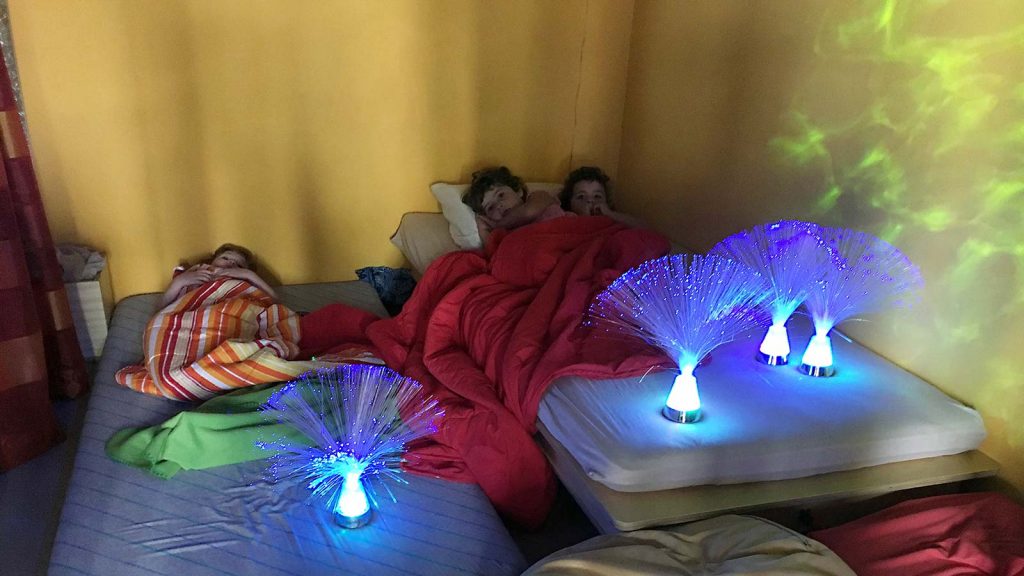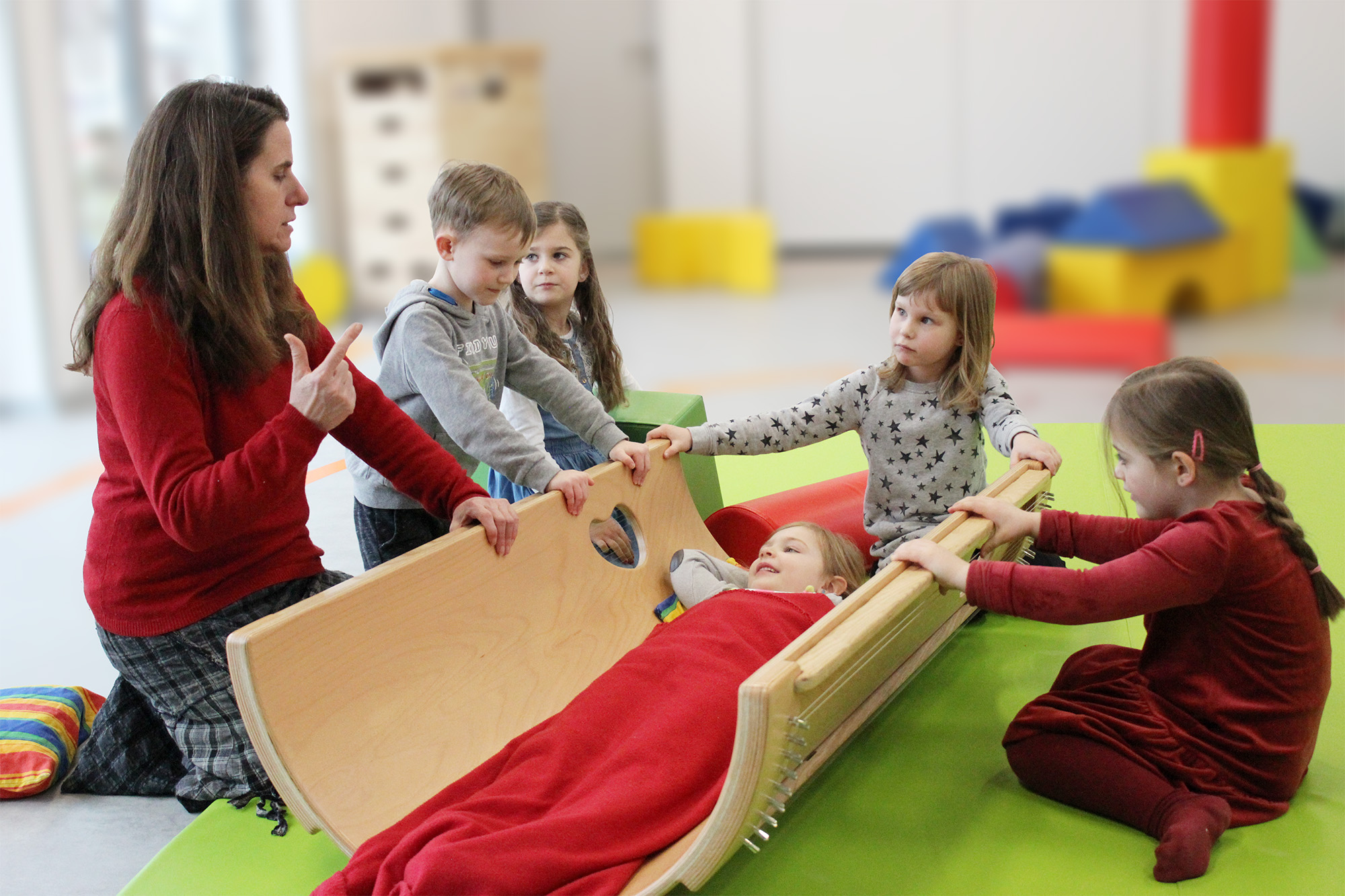Music strengthens
Making music together promotes social competence, awareness of oneself and others, strengthens confidence and communication, motor skills, intelligence and personal development.
Allton supports the joy of making music together by offering simple and robust instruments, suitable for everyday use. We are happy to advise you on the selection of instruments from our own workshop as well as recommendable instruments by other European manufacturers.
We offer specialised furniture for rest, “snoezelen” and relaxation rooms in kindergarten and school. We also can assist you in planning and designing such rooms.
Intuitively playable music instruments
ALLTON offers musical instruments suitable for children. Easy to play and sounding in harmony they simply make you want more.
Sound cradle for body awareness
All too often there is a lack of relaxation, even in kindergarten, which often leads to restlessness, nervousness and a lack of concentration. This is where the relaxation and perception concept of the Allton Sound Cradle comes into play. The Sound Cradle is a combination of a musical instrument and robustly built relaxation furniture.
In the cradle, children can receive and enjoy an amazing sound experience with many senses, feel their body and find inner peace. Relaxation and mindfulness must also be learned and practiced! With the sound cradle, regular sound and silence exercises with the monochord, singing bowls, rain stick etc., children can find rest more easily and become more balanced, refreshed and fit for further learning processes for the rest of the day.

Sound cradle for Kindergarten use
We have set up a “snoezel room” (relaxation room) in our day care centre. It helps to improve the sensitive perception while also relaxing and playing quietly. Exactly for this purpose the sound cradle KL130 was conceived. Children can sit it or lie down. Staying inside this instrument can be a very intensive experience, as the sound is first transferred to the body of the sound cradle and then to the interior by plucking and playing the strings.
The vibrations are throughout the whole body. Children enjoy the direct physical contact and experience the vibrations as beneficial. They pluck by themselves or let others do it. At the same time, the cradle can be moved and swayed. The cradle can also be turned over to create a “sound tunnel”. The children experience the vibrations together, on and under the cradle.”
Monika Nordheim, Kassel, Kindertagesstätte Wolfhager Str.

Förderung in Schulen durch Rhythmusschulung
“My rhythm trainings help students to become aware of the feeling for each other and with each other. To be able to respond to others in a social way, the rhythm of the other person must be recognised and respected.”
“These rhythmic exercises promote mindfulness, the students can better perceive themselves and others in the room. In the long term, the better organization of time is encouraged and the speed of thought and action is synchronized. Rhythm instruments and drums are ideal for teaching.”
Jürgen Lehmann, rhythm pedagogue, Sambaristi, Bad Wildungen

Sound-relaxation island for Kindergarten
Andreas Biermann is an educator with heart and soul. He is passionate about producing music as a balance to the daily routine at the daycare center.


